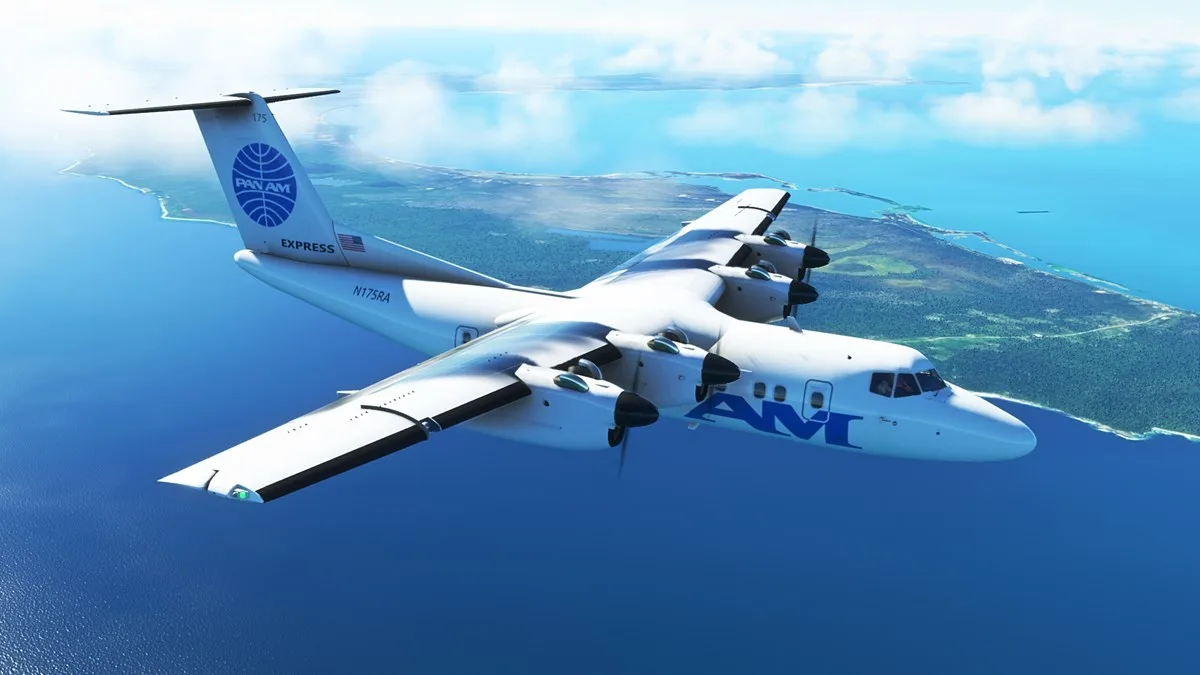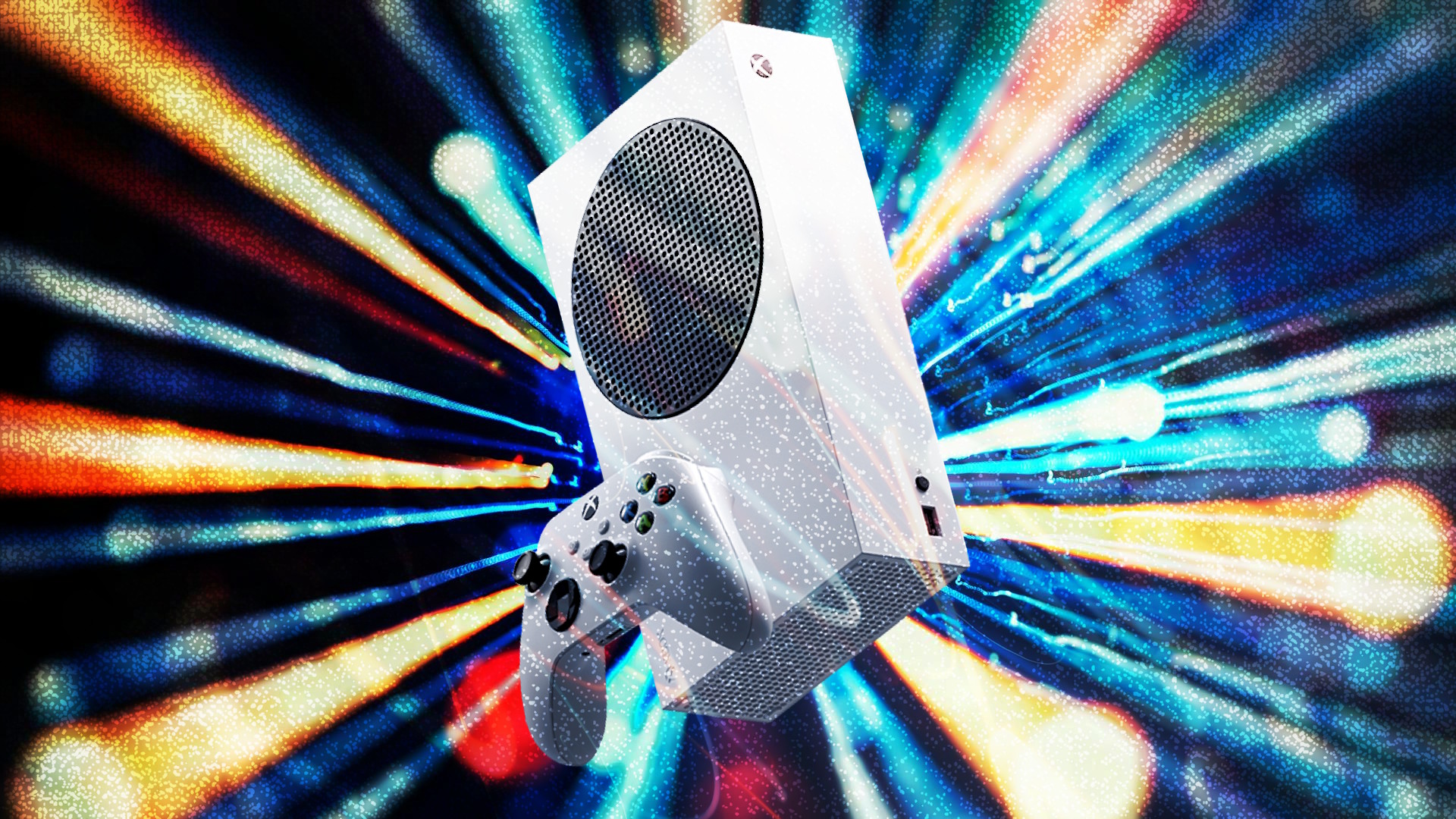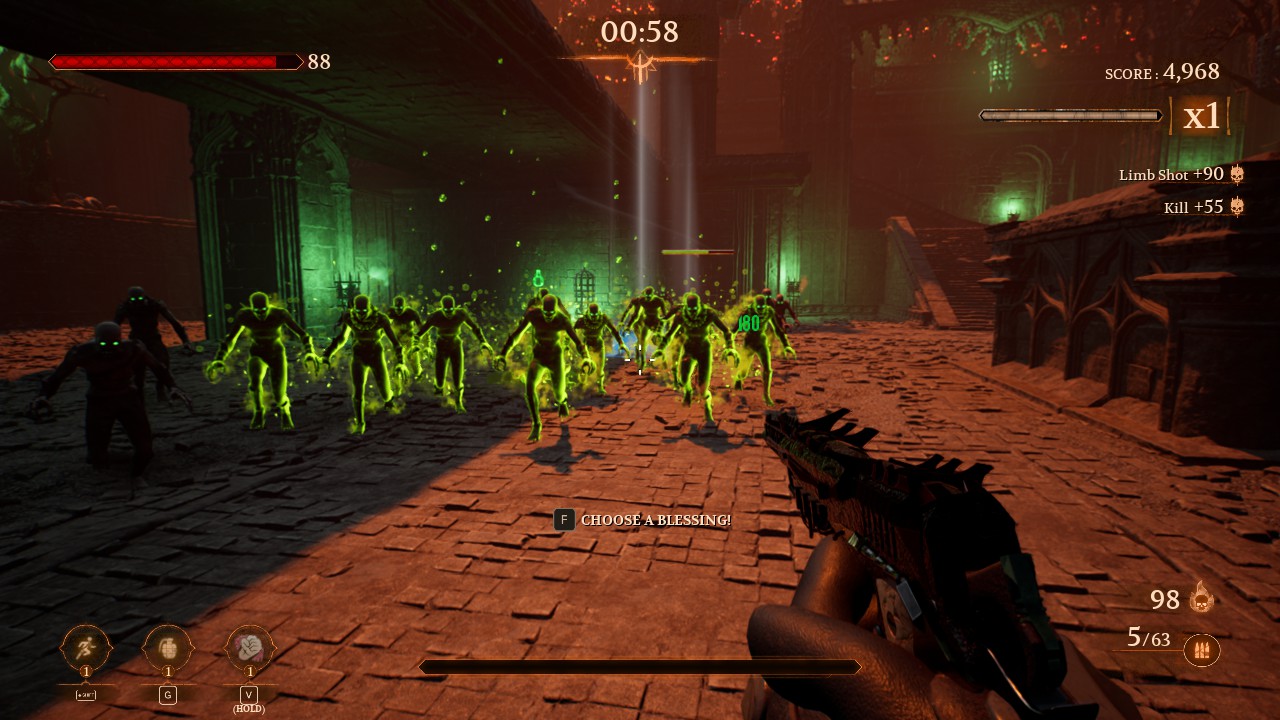The de Havilland Canada DHC-7, more popularly known as the Dash 7, is a turboprop with quite a lot of history behind it. She first flew in 1975 and entered service in 1978. Her claim to fame was her quad-array of large turboprop engines and fairly small fuselage, all blending together to create a light, nimble aircraft with STOL (short-take-off-landing) characteristics, enabling the aircraft to skirt in and out of airfields with short runways.
These important design aspects have been preserved with the Microsoft Flight Simulator release of the virtual rendition of this old Canadian workhorse from add-on maker, PILOT’s. The team has brought the turbo quad from the 70s into the modern sim with some nice detail, but much like any old machine, there’s some parts missing.
Back to basics
Considering its age, it should come as no surprise that the avionics in this bird are fairly rudimentary. There is a handy Quick Start guide that’s included in the install file when you buy it from the PILOT’s website. However, there’s also currently no interactive checklist functionality and even the ultimate “Shift+E” key combination yielded no results.
Nevertheless, it’s a good thing that the Dash 7’s avionics suite is very straightforward, as getting its electrics running and the engines ignited took basically no time at all when I first tried it out. Additional note, there’s various panel modules that can be selected, with each included livery supporting all of them. This includes support for the payware TDS GTNXi and the free GNS 530 GPS mods, along with the ability to go full retro with a steam gauge panel, should you so desire.
As for getting things running, all one has to do is turn on the battery, flip on the fuel pumps, engage the gust lock, turn the starter knob for each engine on one at a time and set the condition levers to feather; repeat that three more times and the quad comes to life.
Flying this old bird is also not a challenge at all. In terms of creature comforts, she includes a run-of-the-mill autopilot system that allows it to follow a heading or a NAV signa, and one can also set a pre-determined altitude for the aircraft to ascend or descend to. This is accompanied by vertical speed knob and a yaw damper.
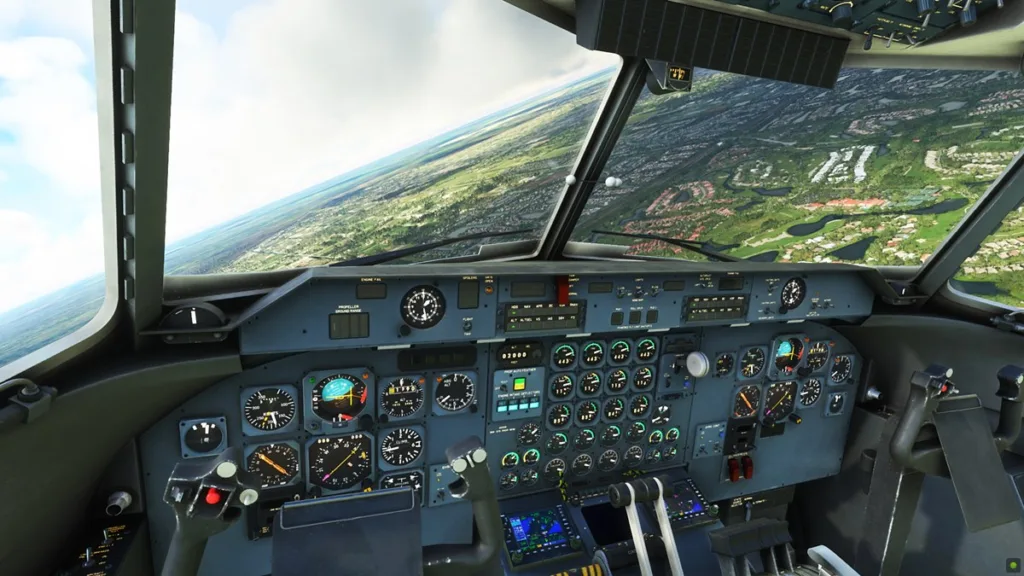
While these features are all great, the actual flight characteristics do take a little getting used to.
Four engines with no juice
At first glance, the look of four big engines on a fairly small airframe seems like it should almost be overkill, it turns out that the “Dash” in “Dash 7” is as misleading as its visual identity.
In the real world, its maximum cruise speed is only 266 mph/428 km/h. When flying it in the sim, with not even a full load and at fairly low altitudes (around 7-11,000ft,) I could only get the prop up to just under 200 knots (230 mph/370 km/h.) At a climb rate of 500 FPM (which is what you’d expect from a typical general aviation airplane rather than an airliner,) I’ve observed the Dash 7’s airspeed to hover around only 170 knots.
In square terms then, the Dash 7 isn’t really about speed at all. As it would turn out, her less-than-stellar performance here in Microsoft Flight Simulator is basically a match for the real-world aircraft.

After doing some research, I discovered that the Dash 7 was designed to compete outside of the realm of other turboprops at the time. Examples include popular airframes such as the Fokker F27 and Convair 600. Those turboprops were larger and had more powerful engines.
The mission for the Dash 7, rather, was to go where those aircraft couldn’t. She was built to be more rugged and utilitarian; able to slip in and out of airfields with short runways and overall simple infrastructure.
Seeing that she was built to serve such a small niche, it should come as no surprise that the production run didn’t last for very long.
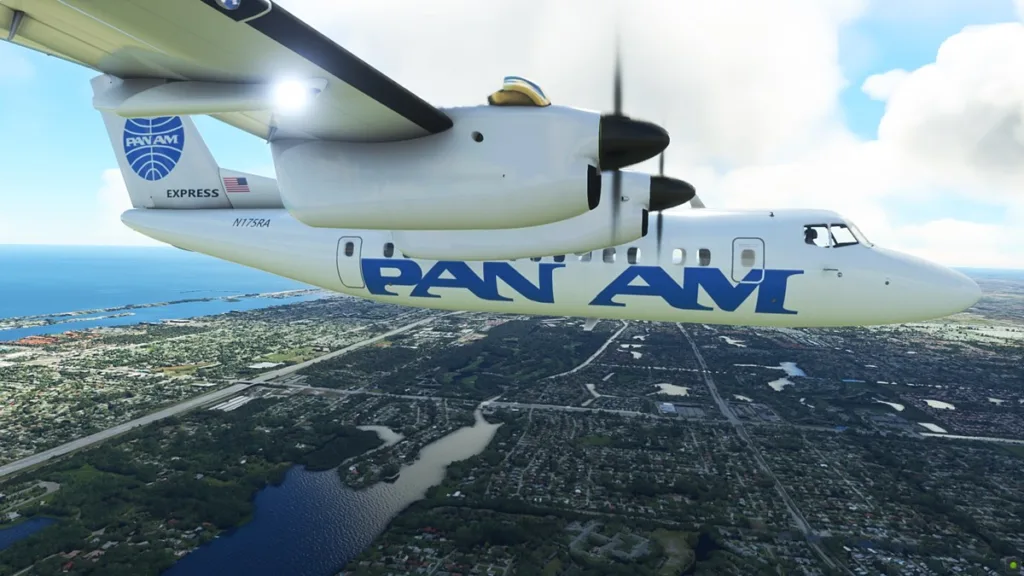
Altogether, the Dash 7 was around for just 13 years, with the last model rolling off the assembly line in 1988. A mere 113 units were built within that time. For comparison sake, 586 units of the aforementioned Fokker F27 were built and an even more impressive 1086 units of the Convair 600 were built.
Despite its short run, however, the Dash 7 managed to see deployments in a variety of regions. While many airlines flew it in the rough winter regions it was designed for, the turboprop even saw a brief stint in the Caribbean with airliners like Gulfstream International Airlines and Paradise Island Airlines, both of which are now defunct. Nevertheless, their history with this aircraft is interesting.
A fish out of water
Only because of a comment left under PILOT’s announcement post on Facebook about the arrival of the add-on did I discover that Dash 7’s used to roam the skies of my home country, The Bahamas.
Both of the airliners mentioned above commenced operations in the 80s and flew the Dash 7 for a few years. Gulfstream International Airlines served various islands of The Bahamas and many cities in Florida, which was fitting considering it was based out of Miami.
As for Paradise Island Airlines, it had operated out of the now extinct Paradise Island Airport, located on Paradise Island in The Bahamas. The island is far better known today as the home to the world-famous Atlantis Resort.
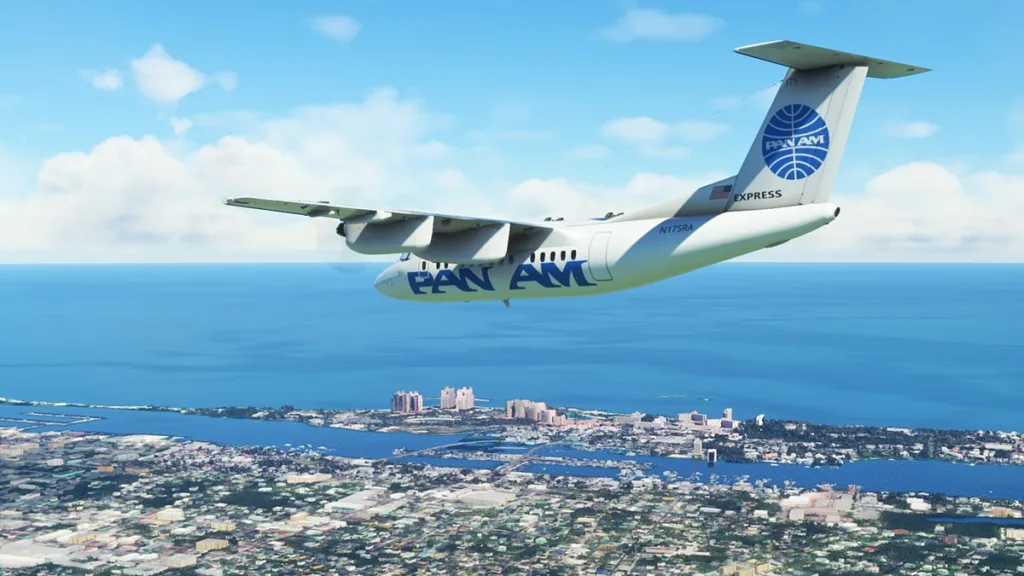
Paradise Island Airlines ran Dash 7 flights from that airport to various spots in Florida including Miami, Fort Lauderdale, Orlando and West Palm Beach.
Seeing that I discovered this little nugget of history just before acquiring the Dash 7 add-on, I decided to jump into the experience by making use of the included Pan Am livery and flying between The Bahamas and Florida to recreate some of the historical routes in the sim.
The choice of the Pan Am livery seemed fitting since, fun fact, that airline also doesn’t exist anymore and used to run flights to The Bahamas.
Taking it a bit too easy
Even though it’s been great to take this old bird out for some island hopping, I couldn’t help but notice the flaws of this initial release. Slow speeds aside, the overall quality of the Dash 7 as an add-on is a bit of a mixed bag, as I alluded to at the onset of this review.
For one, while texture work isn’t half bad, one particular area that I don’t like is that there’s a thick black area across the top of the wings, meant to represent consistent exposure to engine exhaust.
While the exceptionally dark look of it on the model makes sense given its supposed to represent an aged aircraft, the texture just looks odd and muddy to me.
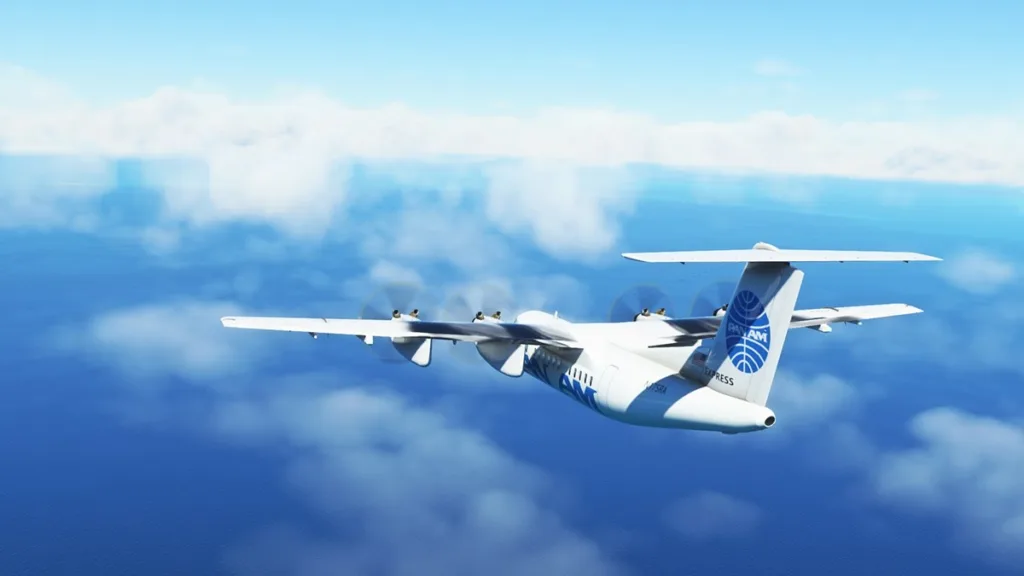
The actual designs of all the included liveries are fine, but moving on to the interior, again there are some oddities. I just mentioned how the engine exhaust is seemingly meant to represent an older aircraft, but the interior texture work would make you believe the plane just underwent a heavy renovation. The cabin and cockpit are almost too clean, aside from the windows having some blurry scratches to represent faux wear-and-tear.
Considering the ruggedness of the airframe and its actual age, some more granular detail would have been solid. Microsoft Flight Simulator has prided itself over the years for offering gorgeous, practically photorealistic visuals, so anytime there’s less-than-stellar texture work on a model, it sticks out. That’s definitely the case here, unfortunately.
But, of course, visuals are only half the package, and the least important half at that. As for the actual flying experience, as mentioned before, the Dash 7 controls just fine. She’s a very forgiving aircraft and easy to handle. Her signature STOL capabilities are preserved here in the sim, as she can get on and off of a runway without a hiccup.
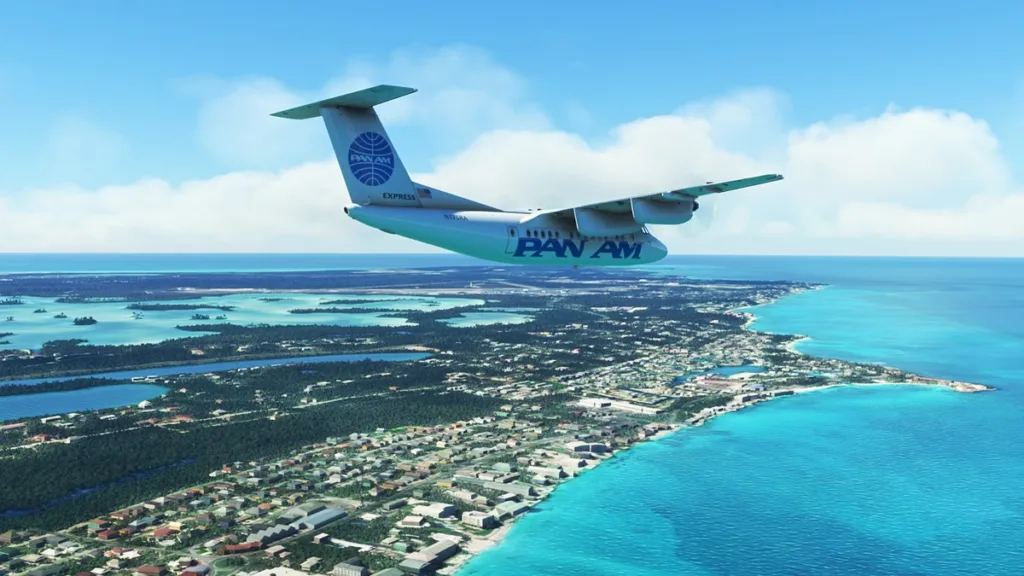
Throw back the reverse thrust when landing and the airspeed will almost fade immediately; it also helps that the comically low landing speed makes it feel almost like that of piloting a larger Cessna 172. Though, really, this is more often compared to flying a larger Twin Otter which is essentially the little sister to the Dash 7.
Highlights aside, however, there are various bugs present in the release version of the add-on.
Not all of the buttons and switches are operational for one and perhaps the most egregious bug is the textures on the co-pilot model flashing bright purple. This particular graphical issue is a common one in Microsoft Flight Simulator, but it only appears when textures applied to a model are incompatible with the sim version. Thus, it seems like PILOT’s is just using outdated and/or broken files. That said, it is weird that the co-pilot model is visible in the cockpit at all to begin with.
My biggest pet peeve with this aircraft is how it taxis. While it functions fine in the air and considering that it isn’t very fast when it’s up there, I’d love to know why it seems so eager to get off the ground.
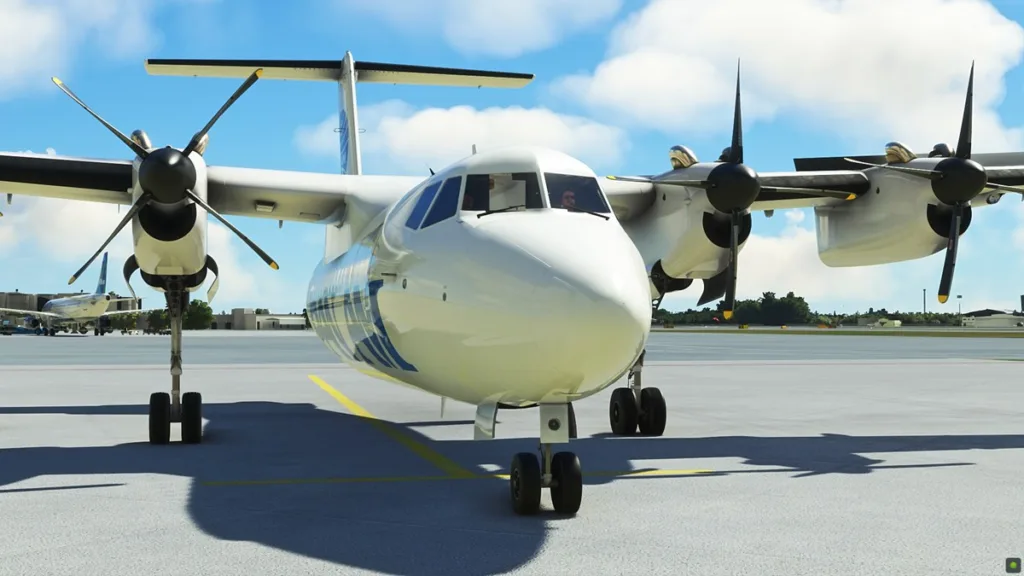
Once the engines are running, simply unlocking the parking brake will have the aircraft immediately begin to pick up speed without any movement of the throttles.
As a result, you have to carefully manage the condition levers to try and mitigate this effect; perhaps even using the reverse thrusters at times to further help.
While these quirks in behaviour are not totally strange for a turboprop, they seem to be severely exaggerated here. Taxiing using just two engines running somewhat helps, though it’s all still more complicated than it should be.
It’s also worth mentioning that there is currently no EFB. Though this isn’t a requirement by any means, seeing that so many other add-on aircraft make use of it for flight planning and ground operations, it would be neat to hopefully see one included here, too. In fact, currently the only way to fuel up and load cargo is by means of the sim’s own aircraft weight option menu.
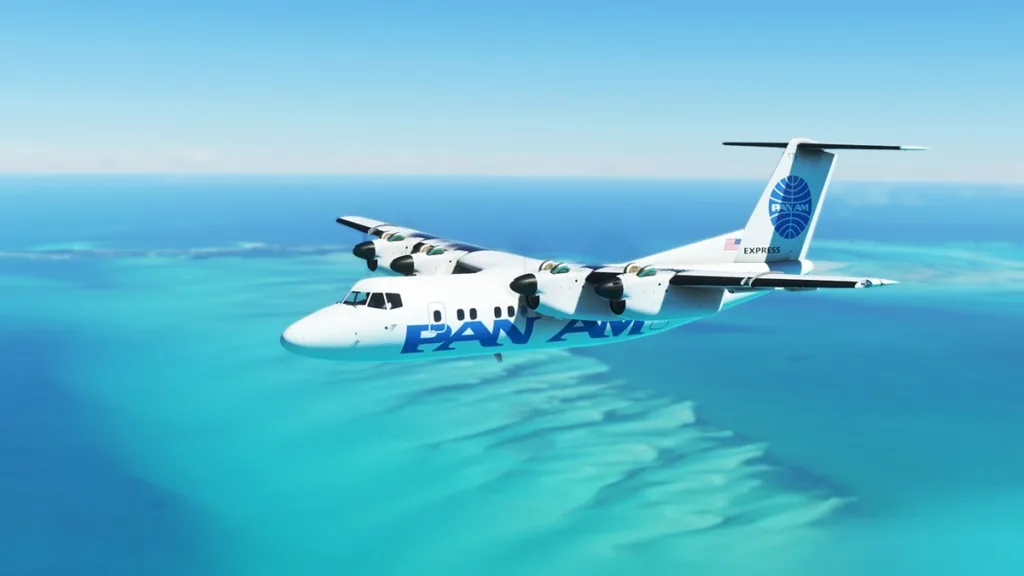
Missing too are a few sound effects. Various components including the cabin door and fuel pumps are silent, along with certain buttons and switches which seem to not make any sound at all. Additionally, the sound package for the engines isn’t amazing.
It’s fine, but I’ve even seen folks more familiar with the how the real plane is supposed to sound point out that this sim iteration lacks a lot of the punch and decibel violating loudness that the real plane exudes.
Crude runnings
Microsoft Flight Simulator PILOT’s Dash 7 is certainly not a perfect release given all of the flaws I’ve highlighted; seeing it come out in such a relatively half-baked state is disappointing and a little surprising considering that PILOT’s has received help from the talent over at SimWorks Studios. That team is the mastermind behind great Microsoft Flight Simulator add-ons like the very well-received Quest Kodiak 100.
Nevertheless, if you can look past the flaws, there’s still some fun to be had here with the rugged little airliner that is the Dash 7. Much like Asobo’s ATR 42/72, the Dash 7 offers an alternative for running airline operations in the sim that don’t involve yet another Airbus jet.

Seeing that such turboprops like this are just slower and less capable by nature, it ends up being a more hands-on experience. While you’re flying lower, you get to admire the aerial views with a little more detail. Considering the Dash 7 in particular is made to get in and out of small airports, you can certainly take it to a wider variety of spots compared to a typical passenger jet.
In the real world, the Dash 7 actually still flies today in various sectors. It continues to serve as a commercial aircraft, so this unique, historical bird is a welcome addition Microsoft Flight Simulator. If this also happens to pave the way for its more modern sister, the Dash 8, even better.
Not be too harsh, credit given where credit is due, the PILOT’s team has already confirmed it’s working to fix bugs found in this release version. Just before publication, the first of these patches was rolled out, though my coverage has been conducted with the initial release version of the aircraft.
All in all, with some more oil, grease, and love, this little turboprop has the makings to become a wonderful addition to anyone virtual pilot’s hangar. This is especially true if you’re looking for a slightly more gritty airline flying experience in Microsoft Flight Simulator.
Here’s hoping PILOT’s make quick work with the patch promises and sure enough, the MSRP of EUR 25 will be more worthy of justifying.
Check out more Microsoft Flight Simulator features:
Microsoft Flight Simulator – Asobo ATR 42/72-600 — Is it worth it? | The turbulent tales of “study level” Microsoft Flight Simulator add-ons | Microsoft Flight Simulator 2024 is starting to make sense to me

